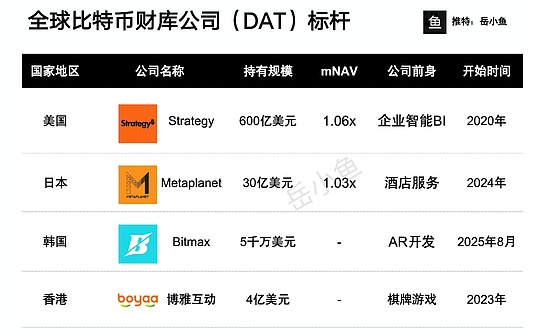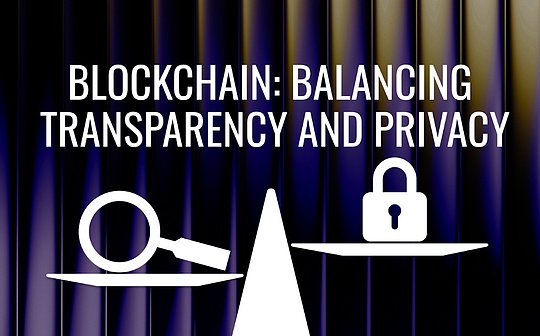
Author: Zhang Feng
On September 29, U.S. SEC Chairman Atkins promised to implement minimum supervision and accelerate Trump’s proposal to cancel corporate quarterly earnings reports, allowing listed companies to release financial reports every six months rather than every 90 days before.This policy change not only marks a major shift in SEC’s regulatory thinking, but also reflects the fundamental difference between the development pace of crypto business and the traditional financial market.
“The government should implement ‘lowest effective dose’ regulation – both protecting investors and allowing businesses to grow and grow,” wrote Paul Atkins, chairman of the U.S. Securities and Exchange Commission (SEC) in a recent commentary for the Financial Times.

1. Regulatory Transformation: The “minimum effective dose” principle of SEC
The SEC is undergoing a complete transformation from strict regulation during the Biden administration to “light touch” regulation.Chairman Atkins criticized his predecessor Gary Gensler for his “radical regulatory and law enforcement stance” to promote, marking a historic turning point in the US financial regulatory thinking.Atkins made it clear that it is “time for the SEC to remove its influence and let the market determine the best reporting frequency based on factors such as the company’s industry, size and investor expectations.”He argued that regulatory change should not be driven by political trends and sharply criticized Europe’s regulatory model for being driven by “theorists”.
This regulatory idea is summarized as “minimum effective dose” regulation – finding a balance between protecting investors and allowing businesses to flourish.The SEC not only considers canceling its quarterly report, but its attitude in the cryptocurrency field has also changed from “radical suppression” during the Gensler period to “moderate acceptance”.This confirms that the “light-touch” regulatory idea will be fully unfolded.
2. Encryption business: development rhythm and the special nature of information disclosure
The crypto asset market has a completely different development rhythm and technical characteristics from traditional finance. These particularities determine the differences in its information disclosure needs.
The information disclosure method of encryption services is significantly different from traditional enterprises.Its core feature is a technology-driven communication mechanism between real-time transparency and community.Traditional quarterly reports rely on lagging financial data, while crypto projects rely on on-chain data disclosure in real time (such as transaction volume, active addresses), and key decisions are voted by the community through decentralized governance proposals, and progress is disclosed through technology roadmap updates and community forums dynamic disclosure.This disclosure method originates from its special business nature of agile development, global distribution and token economic model, which has shifted information disclosure from cyclical and standardized to continuous, technological and community.
The technology iteration speed is extremely fast.Crypto projects usually follow an agile development model, constantly iterating products based on market feedback and code testing.Unlike traditional companies that plan quarterly, crypto projects may undergo multiple protocol upgrades and feature updates within a month, and quarterly financial reports often fail to accurately reflect this rapidly changing technology environment.
Business models cross national boundaries.Crypto services are essentially global and are not restricted by geographical boundaries. Their user base, liquidity provision and governance structure are scattered around the world.This makes it difficult for quarterly financial reports based on a single jurisdiction to fully reflect business conditions, and requires a more flexible and customized information disclosure method.
The market dynamics are complex and changeable.The crypto asset market operates around the clock 24/7, and its price volatility is much higher than that of traditional assets.At the same time, the DeFi protocol and token economic model have created a completely new business model, and its value creation and revenue sources are completely different from those of traditional companies.
The “Guidelines for Securities Issuance and Registration and Disclosure of Crypto Asset Markets” released by the SEC in April 2025 requires companies to explain their business models, token functions, technical architecture and development milestones in detail, which reflects the recognition of the particularity of crypto business.
3. Deciding frequency independently: Why is it conducive to crypto services?
Allowing crypto companies to independently decide on the frequency of information disclosure will have a multifaceted positive impact on this emerging industry.
Improve the quality of information disclosure.Self-determined reporting frequency does not equal the reduction of transparency.Instead, it allows project parties to conduct more comprehensive and in-depth information disclosure at important moments rather than hastily reporting to meet quarterly deadlines.After the UK resumed its semi-annual report system in 2014, some large companies still chose to continue to release quarterly reports due to their own needs, which proves that the market itself can effectively determine the frequency and depth of information disclosure.
Match the pace of technological development.The semi-annual report system is more in line with the technology development cycle of crypto projects.Crypto projects are usually carried out on the technology roadmap, and key protocol upgrades and product releases do not necessarily sync with the financial quarter.The independent decision on disclosure frequency allows project parties to conduct comprehensive information disclosure after important technical milestones are reached, rather than fixed quarterly mechanical reports.
Focus on long-term value creation.The cancellation of quarterly reports can help reduce excessive attention to short-term price volatility.The crypto market is already known for its high volatility, and quarterly reports may exacerbate this short-termism.The semi-annual report system can encourage investors to focus on fundamentals and long-term technological progress rather than quarterly financial data.
Reduce compliance costs.Frequent reporting preparation requires a lot of legal, accounting and human resources to be invested.These costs are particularly heavy for many crypto startups that are still developing products and building user bases.Reducing disclosure frequency can directly reduce the compliance costs (audience, manpower, time) of these companies, allowing them to focus more on long-term strategies rather than short-term performance fluctuations.
4. Investor protection: Information disclosure reform and balance of right to know
The SEC’s plan to cancel the quarterly report has raised concerns about whether it will harm investors’ right to know.To this issue, a comprehensive analysis of the needs of different investors and the new possibilities brought about by technological changes is needed.
At present, information disclosure requirements are difficult to apply to the particularity of the crypto market.Crypto projects usually provide real-time business metrics through on-chain data, such as transaction volume, number of active addresses, and total locked value (TVL).These real-time data may reflect the health of the project better than quarterly financial statements.In addition, information disclosure of encryption projects can be achieved in a more transparent and tamper-free form through blockchain technology, such as recording important information directly on a distributed ledger.
But on the other hand, there are differences in information acquisition capabilities.Institutional investors usually have specialized teams and advanced tools to continuously track the company’s dynamics, while small and medium-sized investors mainly rely on public financial reports.At present, the A-share market is still dominated by small and medium-sized investors, and its information acquisition ability is weak. The cancellation of quarterly reports will significantly aggravate information asymmetry, which is not conducive to investor protection.
The way to balance is to be in line with the actual business.The SEC may consider differentiated disclosure requirements: it is a reward for compliant listed companies and reduces the frequency of disclosure; for companies with a history of fraud and internal governance chaos, maintain or even increase the frequency of disclosure.A 2019 survey of global memberships by the CFA Association showed that 59% of people disagree with reducing the frequency of reporting, citing potential information leakage and unfair markets.Six months are a long time for information leakage, and the information provided to certain investors may be asymmetric, and leaks may occur that undermine market fairness.
V. Global Impact: Spillover Effect of US Regulatory Turn
The SEC’s “light-touch” regulatory shift may have a profound impact on global compliance trends and reshape the international financial regulatory competition landscape.
This shift in the United States may force other financial centers to reevaluate their own regulatory frameworks, to maintain competitiveness.If the U.S. successfully attracts crypto businesses and investors through more flexible disclosure requirements, other areas with stricter regulation may face pressure on business outflows.
Atkins has explicitly criticized the regulatory model in Europe driven by “theorists”,The EU’s “CSRD” and “CSRD” directive (CSDD) are specially named.He believes the directives require companies to disclose matters that “may be socially meaningful, but often not financially important”, and these mandatory requirements may pass on costs to U.S. investors and clients.
SECThe shift may accelerate the global trend of differentiated disclosure: different companies apply different disclosure standards based on their size, industry and investor structure.At the same time, technology-driven disclosure may replace fixed frequency disclosure, and real-time data access and blockchain verification may become standard practices for future information disclosure.The emphasis on substantive information will also increase, with regulatory focus shifting from checking whether fixed reporting requirements meet to assessing whether companies provide substantive information on investment decisions.
The SEC’s plan to cancel the quarterly report reflects the fundamental difference between the development pace of crypto business and traditional enterprises, and also indicates the future direction of financial regulation driven by technology.The “thumb” of regulation is moving away from the market balance, and blockchain technology itself may be the most effective way to achieve truly “speaking and keeping aside” transparent disclosure.The history of financial regulation has never been a simple swing between strictness and looseness, but a search for the best balance point in constantly adapting to market changes.







